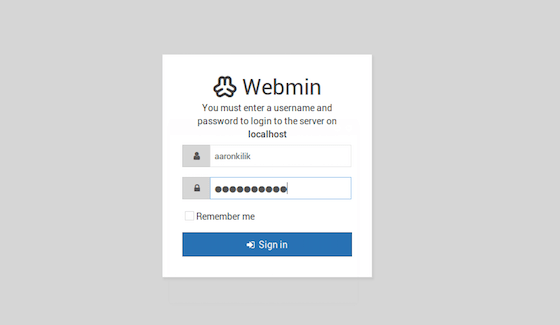
In this tutorial, we will show you how to install Webmin on Debian 11. For those of you who didn’t know, Webmin is an open-source application platform that gives a web-based graphical user interface to manage Linux servers such as setup user accounts, Apache, DNS, file sharing, and much more. It has become a good open-source alternative for cPanel.
This article assumes you have at least basic knowledge of Linux, know how to use the shell, and most importantly, you host your site on your own VPS. The installation is quite simple and assumes you are running in the root account, if not you may need to add ‘sudo‘ to the commands to get root privileges. I will show you the step-by-step installation of Webmin on a Debian 11 (Bullseye).
Prerequisites
- A server running one of the following operating systems: Debian 11.
- It’s recommended that you use a fresh OS install to prevent any potential issues.
- SSH access to the server (or just open Terminal if you’re on a desktop).
- A
non-root sudo useror access to theroot user. We recommend acting as anon-root sudo user, however, as you can harm your system if you’re not careful when acting as the root.
Install Webmin on Debian 11 Bullseye
Step 1. Before we install any software, it’s important to make sure your system is up to date by running the following apt commands in the terminal:
sudo apt update sudo apt upgrade sudo apt install apt-transport-https
Step 2. Installing Webmin on Debian 11.
Now we add the GPG key on the Debian system:
wget -qO - http://www.webmin.com/jcameron-key.asc | sudo apt-key add -
Next, add the Webmin repository to its own sources list:
sudo sh -c 'echo "deb http://download.webmin.com/download/repository sarge contrib" > \ /etc/apt/sources.list.d/webmin.list'
After that, refresh the apt source and install Webmin using the following command below:
sudo apt update sudo apt install webmin
In case the Webmin server service has not been started automatically then run the following command:
sudo systemctl start webmin sudo systemctl status webmin
Step 3. Configure Firewall.
By default, Webmin runs on port 10000. In case of OS firewall is enabled on your Debian server, then use the following commands to allow 443 and 10000 ports:
sudo ufw allow 443 sudo ufw allow 10000
Step 4. Accessing Webmin Interface.
Once successfully installed, you can access using your web browser. Just go to https://your-server-ip-address:10000. It will ask for user credentials. Use your system user or root login with the password to access Webmin.


Congratulations! You have successfully installed Webmin. Thanks for using this tutorial for installing the latest version of the Webmin control panel on Debian 11 Bullseye. For additional help or useful information, we recommend you to check the official Webmin website.